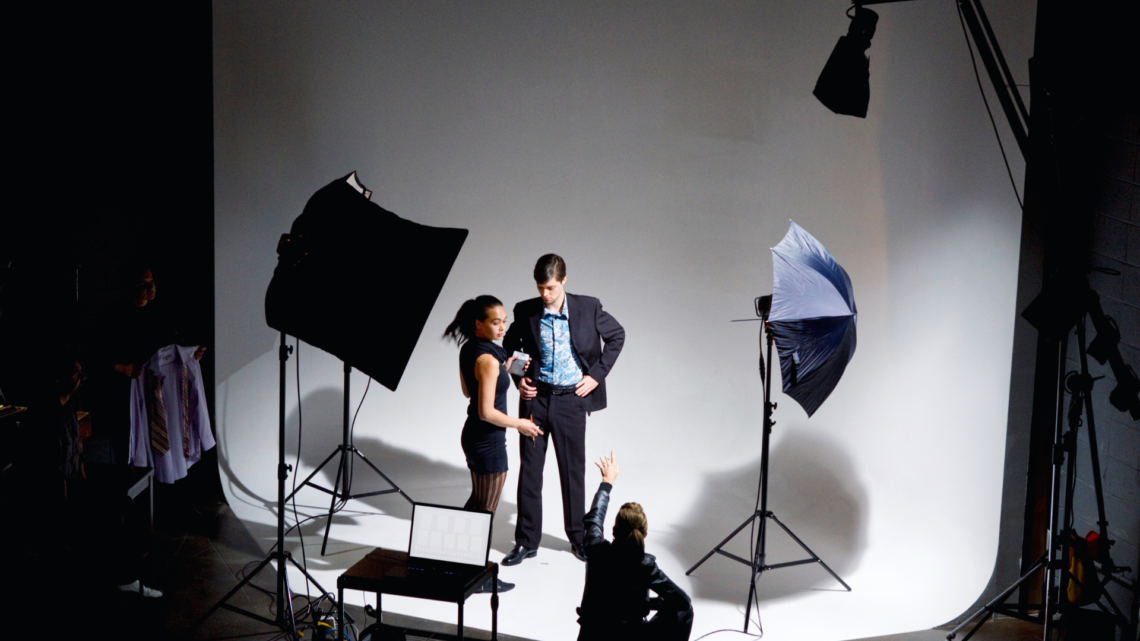Becoming a fashion photographer requires a blend of technical skills, creativity, and a deep understanding of the fashion industry. To break into this competitive field, one must develop a strong portfolio, learn to network effectively, and stay current with trends. Aspiring photographers often start by honing their skills through education or self-study, focusing on lighting, composition, and post-processing techniques.
Networking plays a vital role in establishing a successful career in fashion photography. Building relationships with models, designers, and stylists can lead to collaboration opportunities that elevate a photographer’s work. Attending fashion events, participating in workshops, and engaging on social media platforms are practical steps to connect with industry professionals.
Additionally, a distinctive personal style can set a photographer apart in a crowded market. Experimenting with different genres and approaches to fashion photography helps to cultivate a unique voice. Successful photographers leverage their individuality to create compelling images that resonate with clients and audiences alike.
Understanding the Fashion Photography Industry
Fashion photography is a dynamic and multifaceted field that has evolved significantly over the decades. It encompasses various styles and approaches that contribute to the visual representation of fashion. This section explores its history, key players, and current trends.
History and Evolution
Fashion photography emerged in the mid-19th century, coinciding with the rise of fashion magazines. Early pioneers like George Hoyle captured the allure of garments in studio settings. The advent of color photography in the 1930s transformed the industry, allowing for more vibrant displays of fashion.
In the 1960s and 1970s, photographers like Richard Avedon and Helmut Newton redefined the genre. They introduced narrative elements and emotional depth, moving beyond mere cataloging of clothing. The shift towards lifestyle photography in the 1980s and 1990s marked another evolution, connecting fashion to broader cultural contexts. Today, digital technology continues to reshape how fashion photography is created and consumed.
Key Industry Players
Key players in fashion photography include photographers, models, stylists, magazines, and brands. Prominent photographers, such as Mario Testino and Annie Leibovitz, have become household names, often influencing trends and shaping public perceptions.
Models play a crucial role, with iconic figures like Naomi Campbell and Gigi Hadid becoming influential in their own right. Fashion magazines such as Vogue and Harper’s Bazaar remain significant platforms for photographers, providing exposure and credibility.
Brands collaborate with photographers to create compelling campaigns that resonate with consumers. Agencies representing photographers and models also play a pivotal role in connecting talent with opportunities within the industry.
Current Trends and Future Outlook
Contemporary fashion photography is heavily influenced by digital platforms and social media. Photographers often share portfolios on Instagram, creating a direct line of engagement with audiences. This accessibility allows for diverse voices to emerge, challenging traditional beauty standards.
Sustainability has become a critical focus, leading many photographers to explore eco-friendly practices and themes in their work. Collaborations between artists and fashion brands are increasingly common, blurring the lines between commerce and artistry.
Looking ahead, advancements in technology, such as artificial intelligence and augmented reality, promise to further transform the industry. Photographers will need to adapt to these changes to stay relevant in a fast-evolving landscape.
Developing Your Photography Skills
To succeed in fashion photography, a strong foundation in photography skills is crucial. Mastering technical knowledge, specializing in the fashion genre, and developing a unique style through experimentation are essential steps in this journey.
Mastering the Fundamentals of Photography
Understanding the basics of photography is vital. Knowledge of exposure, composition, lighting, and camera settings forms the backbone of any photographer’s skill set.
Key concepts include:
- Exposure Triangle: Master shutter speed, aperture, and ISO.
- Composition Techniques: Apply the rule of thirds, leading lines, and framing.
- Lighting: Learn natural versus artificial lighting; understand the use of diffusers and reflectors.
Practicing these fundamentals through various photography genres can enhance skills relevant to fashion photography, allowing for more confident shooting in diverse conditions.
Specializing in Fashion
Fashion photography requires an eye for trends, aesthetics, and storytelling. Studying different styles and techniques within the genre is essential.
She should focus on:
- Fashion Editors and Iconic Photographers: Analyze their work for inspiration.
- Fashion Shows and Lookbooks: Capture models in dynamic poses and garments.
- Networking: Engage with designers, models, and other photographers to gain insights and opportunities.
This focused approach helps develop a keen understanding of what best represents fashion and style in visual storytelling.
Experimentation and Style Development
Developing a personal style is crucial for differentiation in fashion photography. He or she should regularly experiment with various techniques and themes.
Important aspects include:
- Diverse Shoots: Experiment with different settings, lighting conditions, and wardrobe choices.
- Post-Processing Techniques: Familiarize yourself with software to enhance images while maintaining a unique aesthetic.
- Feedback and Iteration: Share work with peers and mentors to gain constructive criticism.
Consistent experimentation leads to a distinctive style that resonates with both the photographer and their audience, establishing a solid presence in the industry.
Building a Professional Portfolio
A well-constructed portfolio is essential for showcasing a fashion photographer’s skills and vision. It includes selecting the best work, presenting it effectively, and creating accessible online and offline formats.
Selecting Your Best Work
Choosing the right images is critical. A photographer should curate a selection that reflects their style and expertise. Focus on diversity in shots, including different lighting, settings, and subjects.
Key guidelines:
- Quality over quantity: Include only 15-20 of the best images.
- Variety: Show a range of styles—editorial, commercial, and candid.
- Consistency: Ensure that images reflect a cohesive aesthetic that aligns with personal branding.
Review feedback from peers or mentors to identify standout pieces. The aim is to illustrate ability and artistic vision clearly.
Portfolio Presentation
Presentation significantly impacts how work is perceived. Every detail contributes to the professional look of a portfolio.
Essential considerations:
- Layout: Use a clean, simple design to highlight the images.
- Image Size: Maintain high quality but optimize for fast loading on digital platforms.
- Captions: Add relevant information such as the project’s context, location, and any collaborations involved.
Including behind-the-scenes shots can also add depth. They give insight into the photographer’s creative process and approach to fashion shoots.
Online and Offline Portfolios
Both online and offline portfolios serve distinct purposes. Having both expands visibility and accessibility.
For online portfolios:
- Website: Create a personal website with a custom domain. This adds professionalism.
- Social Media: Use platforms like Instagram to showcase work and engage with audiences.
- Update Regularly: Refresh content to keep visitors engaged and returning.
For offline portfolios:
- Portfolio Book: Invest in a high-quality printed book for face-to-face meetings.
- Presentation: Use a professional binder or case to enhance appearance.
Presenting in person allows for personal storytelling, which can strengthen connections with potential clients.
Navigating the Business of Fashion Photography
The business side of fashion photography is crucial for establishing a successful career. Photographers must grasp networking strategies, understand how to collaborate with brands, and address legal aspects effectively.
Networking and Self-Promotion
Networking is vital in fashion photography. Building relationships with stylists, models, and other photographers opens doors to opportunities. Attending industry events, workshops, and exhibitions can help establish these connections.
Self-promotion is equally important. Creating a compelling portfolio showcases unique style and abilities. Utilizing social media platforms such as Instagram, Pinterest, and LinkedIn allows photographers to engage with audiences, share work, and reach potential clients. Consistent branding across channels reinforces professional identity.
Join relevant photography groups and forums to expand your network further. Engage with peers, ask for feedback, and seek mentorship. These connections can provide insights and lead to paid assignments.
Working with Agencies and Brands
Working with fashion agencies and brands requires clear communication and professionalism. Photographers should research potential clients and tailor pitches to align with their specific needs. Understanding the agency’s aesthetic can improve the chances of securing assignments.
Contract negotiations are essential. Clear terms regarding payment, usage rights, and deadlines protect both parties. Photographers must be prepared to share their portfolios and showcase previous work that aligns with the brand’s style.
Collaborating effectively with teams, like stylists and art directors, enhances project outcomes. Establishing a good rapport helps ensure a smooth working relationship. Feedback during shoots can lead to better results and a more enjoyable experience for all involved.
Legal Considerations and Rights Management
Legal considerations are important in fashion photography. Photographers should familiarize themselves with contracts, model releases, and copyright laws. Securing model releases is essential to ensure that images can be used commercially without legal repercussions.
Understanding copyright management helps protect original work. Photographers can maintain control over how images are used and avoid unauthorized distribution. Licensing agreements outline how images can be utilized, ensuring fair compensation for the photographer’s work.
Additionally, keeping records of all agreements and communications is crucial. This documentation aids in resolving disputes and clarifying expectations. Photographers should consider consulting with a legal professional to navigate complex situations effectively.

